
Comprehensive Critique of Quantum Philosophy: There Is No Closed Whole By İsmet Şahin

Comprehensive Critique of Quantum Philosophy: There Is No Closed Whole
By İsmet Şahin
Buy the book here:
Quantum Philosophy: There Is No Closed Whole on Amazon
Below is an in-depth critique of the work, organized into several sections:
- Context and Authorial Position
- Overview of the Text’s Structure and Core Claims
- Philosophical Analysis
- Scientific and Historical Assertions
- Assessment of Style, Readability, and Coherence
- Critique of Key Thematic Threads
- Holistic Appraisal and Impact
- Conclusion and Implications
I. Introduction
İsmet Şahin’s Quantum Philosophy: There Is No Closed Whole
(Amazon link)
is an ambitious text that traverses multiple domains—physics, history of science, philosophy, and even social theory. It presents a wide-ranging critique of traditional epistemological frameworks in light of modern quantum discoveries, while proposing a provocative thesis:
that no “closed whole” can adequately capture our ever-evolving scientific and philosophical understandings.
In effect, Ismet Şahin argues that quantum theory demonstrates the open-endedness of knowledge, undermines older deterministic or “mechanical” worldviews, and thereby challenges a variety of social, philosophical, and scientific theories built on these older premises1.
Given the text’s eclectic nature, a critique of its arguments, structure, style, and broader implications must be equally wide-ranging. This essay will therefore proceed through the following major sections:
- Context and Authorial Position: Situating Ismet Şahin’s work within philosophical and scientific debates.
- Overview of the Text’s Structure and Claims: Summaries of each major section—from ancient civilizations to quantum mechanics, social theory critiques, and Big Bang discussions.
- Philosophical Analysis: Evaluating Şahin’s arguments on metaphysics, epistemology, and the “no closed whole” principle.
- Scientific and Historical Assertions: Examining how historical episodes and modern physics developments support or complicate Şahin’s positions.
- Assessment of Style, Readability, and Coherence: Looking at the text’s organization, readability, disclaimers, and referencing style.
- Critique of Key Thematic Threads: Focusing on Marxism, dialectics, classical physics, and the Big Bang.
- Holistic Appraisal and Impact: Determining whether Şahin meets his aims and the potential consequences for philosophical/scientific discourse.
- Conclusion and Implications: Summarizing the major findings and underscoring the text’s role in ongoing debates.
II. Context and Authorial Position
A distinctive feature of Quantum Philosophy: There Is No Closed Whole is its explicit critique of both traditional philosophical “completeness” and the classical worldview associated with Newtonian determinism.
Ismet Şahin holds that modern quantum discoveries, combined with the shift away from local realism, indicate that both knowledge and the universe resist closure. Early in the text, Şahin writes:
“[T]he notion of a completely finished set of propositions is flawed. In the quantum age, … the creation of grand, unified narratives or systematic views … is simply not feasible.” (Şahin, 2024, p. 17)
This approach recalls thinkers like Paul Feyerabend, who advocated methodological pluralism and an “anarchistic theory of knowledge,”2 and Karl Popper, who saw science as perpetually open-ended.3 Yet
Ismet Şahin goes beyond methodology, making an ontological claim that reality itself—especially at the quantum scale—defies any totalizing system. Quantum Philosophy, then, is not just an epistemological critique; it is a metaphysical stance that “the entire universe is an open-ended space” (Şahin, 2024, p. 49).
Moreover, Şahin subsumes older paradigms—classical physics, Enlightenment social theory, 19th-century Marxism—into a broad “closed-world determinism.” Hence, the critique attacks old scientific frameworks, old social-political ideologies, and old metaphysical dogmas. This universal scope amplifies the ambition but challenges coherence across multiple domains.
III. Overview of the Text’s Structure and Core Claims
1. Introduction (of the Book)
Ismet Şahin begins by declaring the work neither “traditional” nor “complete,” describing it as “still evolving.” He juxtaposes classical comprehensiveness with quantum open-endedness, concluding “the end of all social theories” is imminent. Footnotes note that discoveries (like quarks exchanging energy, altering atomic weight) can invalidate whole corpuses of prior physics (Şahin, 2024, p. 17).
2. Ancient Civilizations and the Search for Basic Elements
He surveys how Sumerian, Babylonian, Indian, Chinese, Egyptian, and Greek traditions identified “fundamental blocks.” Though he deems them mythological or incomplete, he acknowledges their revolutionary nature. This segment underscores how ancient civilizations globally sought fundamental elements, eventually overshadowed by the quantum revolution.
3. From Classical to Modern Physics
Ismet Şahin next describes the rise of Newtonian mechanics and quantum mechanics. He references Galileo’s telescopes, Newton’s laws, and 19th-century determinism, arguing the classical worldview shaped not just physics but social and philosophical thought.4 The mention of CERN highlights modern experimental power (LHC) as humanity’s apex in studying subatomic phenomena.
4. The Quantum Revolution
He then details how quantum mechanics (Heisenberg’s principle, Einstein’s concerns, Bohr’s complementarity) upended classical assumptions. Şahin contends older social theories rested on classical determinism, thus quantum’s probabilistic nature subverts them (Şahin, 2024, p. 66).
5. Critique of Social Theories and Marxism
A particularly bold section asserts quantum mechanics negates the logic of Marxism and other social theories. It notes Marx’s reliance on 19th-century physics plus Hegel’s dialectics, which cannot survive quantum “openness.” Şahin calls them obsolete.
6. No Closed Whole
Central is the idea that “there is no closed whole”—nature and knowledge cannot be self-contained. Şahin invokes set theory paradoxes (e.g., Russell’s paradox) as analogy, plus quantum entanglement and non-local correlations as evidence of inherent openness:
“The entire universe is an open-ended space … All deterministic understandings assume an initial starting point … [but] nature and the universe have always existed as a plurality.” (Şahin, 2024, p. 49)
7. Quantum Cognition
Şahin discusses attempts to integrate quantum mechanics with consciousness, noting controversies. He observes that many such attempts are analogical rather than purely scientific, leaving the subject incomplete.
8. Big Bang Theory as Modern Proof of God
Finally, he critiques the Big Bang as a “creation story,” citing star-age or structural anomalies that challenge a “closed” cosmic model. He insists no single origin story can be final or closed.
Overall, the text is a patchwork—historical reflections, quantum transitions, critiques of social theories, Big Bang arguments—culminating in repeated emphasis on “openness.”
IV. Philosophical Analysis
A. The Core Epistemic Argument: No “Finished” Knowledge
Şahin persistently highlights that knowledge is incomplete, reminiscent of Kuhn’s paradigm shifts5 or Feyerabend’s “against method.”2 He indicates quantum mechanics dethroned determinism and continuous measurability.
Strengths:
- Illustrates how new evidence can radically transform theories (Newton → Einstein → quantum).
- Linking quantum breakthroughs to flexible, open-ended knowledge is philosophically coherent.6
Weaknesses:
- Conflating epistemic openness with ontological openness is debatable. Human inability to finalize knowledge needn’t mean nature itself is incomplete.
- Sometimes hyperbolic, e.g., “the end of all social theories” due to atomic weight changes overstates the effect on social sciences.
B. Metaphysics and Ontology: The “No Closed Whole” Proposition
From epistemic open-endedness, Şahin leaps to ontological claims: quantum phenomena (non-local correlations, indefinite states, wave-particle duality) mean no closed system. This implicates theology, cosmic singularities, and classical/Marxist determinism.
Strengths:
- Challenges old teleological or mechanical narratives, employing user-friendly analogies (set theory paradoxes).7
- Aligns with quantum entanglement undermining local realism, hinting complexity in “wholeness.”
Weaknesses:
- Lumps “Big Bang,” “divine creation,” “local hidden variables” as if equally “closed.” In reality, some Big Bang models are more open (e.g., multiverse scenarios).
- Insufficiently discusses mainstream cosmology (inflation, quantum gravity) that might preserve openness anyway.
C. Mind-Matter Problem in a Quantum Context
Şahin briefly covers attempts to unify quantum and consciousness, dismissing many as incomplete:
“Scientists addressing this issue approach it … by rebranding wavefunction collapse as consciousness.” (Şahin, 2024, p. 57)
Strengths:
- He acknowledges speculative nature of quantum-consciousness theories, resisting naive endorsements.
- Demands biologically grounded methods instead of purely philosophical illusions.
Weaknesses:
- Proposes no alternative framework; no new quantum-based consciousness theory is articulated. “Ongoing notes” disclaimers mitigate but leave a gap.
V. Scientific and Historical Assertions
A. Historical Summaries
Şahin enumerates how Sumerian, Babylonian, Indian, Chinese, Egyptian, and Greek cultures sought elemental building blocks. Some parallels appear forced, possibly oversimplifying distinct traditions.
Strengths:
- Underscores universal efforts to find fundamental elements, bridging ancient to quantum.
- Broadens beyond Eurocentric focuses.
Weaknesses:
- Lacks in-depth scholarship references on Chinese or Sumerian studies.
- Transitions to modern quantum can feel abrupt or forced.
B. Critiques of Newtonian Mechanics & Big Bang
A provocative aspect is labeling the Big Bang a creation myth, citing anomalies like very old stars or giant structures. Şahin questions the 13.8-billion-year standard figure.
Strengths:
- Calls attention to historical anomalies that refined cosmology (e.g., star-age controversies).
- “Modern theology” rhetorical flourish parallels older creation ideas.
Weaknesses:
- Current cosmological research addresses such puzzles—refined distance measurements, inflation, cosmic microwave background, etc. are underrepresented in the text.
- Overgeneralizing that Big Bang “closes” the universe ignores inflation/multiverse theories, which can be open-ended.8
C. Deterministic Social Theories (e.g., Marxism)
Şahin devotes space to how quantum indeterminacy kills classical or dialectical determinism from Marx, Engels, or Stalin:
“…the entire 19th-century scientific foundation upon which social theories were built is undone … Classical physics, upon which they were built, has been discredited.” (Şahin, 2024, p. 76)
Strengths:
- Historically accurate that Marx leaned on Newtonian concepts. Marx sought “laws” akin to physical laws.9
- Notes how Engels borrowed analogies like “quantity turning into quality” from physical processes.
Weaknesses:
- Claiming quantum mechanics directly negates Marxism is not mainstream among philosophers of science. Marxism is multilayered.
- The text lumps all dialectical materialism together, ignoring complexity-friendly or open-ended Marxist theories.
- “The end of social theories” is again a bold, sweeping statement needing deeper justification.
VI. Assessment of Style, Readability, and Coherence
Structure: The book is more “handwritten manuscript” than linear treatise, with abrupt transitions. Şahin acknowledges this approach as intentional, but it can test readers.
Tone and Accessibility: The author’s direct, sometimes witty tone (e.g., “If there is no God, is He rolling dice?”) livens the content. Personal disclaimers add an aura of openness.
Use of Footnotes and References: Some references are substantial (Feyerabend, Kuhn), though certain cosmological or historical claims lack peer-reviewed citations. Footnotes often contain commentary rather than academically rigorous detail.
Consistency: The broad scope yields minor contradictions. Sometimes Şahin treats quantum results as authoritative, other times he disavows final authority. Disclaimers about “everything in flux” mitigate but hamper a unifying thesis.
VII. Critique of Key Thematic Threads
1. “All Social Theories Are Over”
Şahin shows how 19th-century social theories—Marxism, positivism, etc.—tie into classical determinism. Yet concluding “all social theories” end is extreme:
- Micro-level quantum randomness doesn’t necessarily mean macro-level unpredictability in societies.
- Contemporary social science includes complexity theory or probabilistic approaches, not purely Newtonian models.
2. Defining “No Closed Whole”
He uses Russell’s paradox to illustrate cosmic self-inclusion is contradictory. The analogy to quantum open-endedness is intriguing but somewhat metaphorical:
- Physical theories seldom claim to be sets containing themselves.
- Nevertheless, the principle that “totalizing systems fail under new data” aligns with post-Kuhnian open-ended science.
3. Big Bang and Cosmology
Calling the Big Bang “modern theology” is contrarian, though not unprecedented. Still, mainstream cosmology addresses many anomalies via inflation, cosmic background radiation, dark energy, which the text doesn’t fully explore:
- References star-age controversies but omits more recent solutions or revised expansion rates.
- Neglects cosmic inflation or quantum gravity, which can keep the cosmos open-ended anyway.
4. Quantum Consciousness Skepticism
Şahin warns forcing quantum theory onto cognition might hamper progress, distinguishing genuine physics from superficial analogy:
- He avoids uncritical acceptance of quantum consciousness theories.
- However, no novel alternative is offered; he mostly critiques old ideas.
VIII. Holistic Appraisal and Impact
Positive Contributions
- Creativity/Breadth: From ancient to quantum, social theories to cosmic expansions, it challenges “closure” at every turn.
- Openness Emphasis: Reinforces a scientific fallibilism. Quark exchange or shifting “constants” illustrate real-time evolution of knowledge.
Shortcomings
- Oversimplification: Conflating large swaths of theories as single monoliths (“all social theories,” “the entire Big Bang community”).
- Lack of Balance in Cosmology: Ignores many mainstream rebuttals (inflation, refined star-age measures) to alleged Big Bang contradictions.
- Rhetorical Leaps: Tying Russell’s paradox directly to “open universe” is more metaphorical than rigorous argumentation.
- Insufficient Social Dimension: While it claims quantum randomness nullifies classical determinism, it overlooks modern complexity-based models in social science.
Overall Impact: Despite these issues, Quantum Philosophy: There Is No Closed Whole can spark lively debate among those intrigued by quantum’s broader philosophical and social import. Its mosaic style and disclaimers may attract readers averse to rigid treatises; more academic audiences might find certain claims insufficiently elaborated or supported.
IX. Conclusion and Implications
Ismet Şahin’s Quantum Philosophy: There Is No Closed Whole mounts a far-reaching critique of old scientific and philosophical worldviews in light of quantum “open-endedness.” Through historical accounts, philosophical arguments, and challenges to classical determinism and Big Bang cosmology, the text conveys a single premise: closed systems cannot exist in a cosmos where fresh data continually revise prior assumptions. The phrase “the end of all social theories” highlights the author’s sweeping scope.
Evaluating the text reveals both strengths—creativity, emphasis on post-classical insights, and an engaging style—and shortcomings—oversimplifications, inadequate engagement with mainstream scientific counterarguments, and conflations of distinct “closed” theories. The detail with which Şahin addresses older paradigms is undermined by less thorough confrontations with updated data or complexity-friendly theories.
Nevertheless, in a specialized-monograph world, Ismet Şahin’s panoramic approach and passion for rethinking basic assumptions is a bracing stimulus. It resonates with post-positivist thinkers who maintain science grows by posing new questions that shatter older frameworks5. The implications are far-reaching:
- Philosophers of Science: The radical open-endedness spurs new inquiries into how quantum discoveries reshape classical meta-theories.
- Physicists: While some might find the Big Bang critique oversimplified, the emphasis on anomalies invites reflection on unresolved puzzles.
- Social Theorists: The reminder that 19th-century “physical law” analogies deserve re-evaluation under quantum paradigms is valuable, though Quantum Philosophy perhaps overstates the final blow to existing theories.
- General Readers: The core message—knowledge is in constant flux, rejecting any “closed whole”—offers a counterbalance to rigid dogmas, scientific or theological.
Ultimately, Quantum Philosophy: There Is No Closed Whole stands as a provocative, polemical entry in the ongoing dialogue about how quantum physics intersects with broader intellectual traditions. Şahin asserts we dwell in a cosmos whose bedrock is open, defying final closure. Even as we harness advanced experiments or cosmic telescopes, the author contends our horizon of understanding continually recedes. Thus, Ismet Şahin’s treatise proclaims both the power and the mystery of science—its power to transform knowledge daily, and its mystery that eludes every ultimate claim. It is a plea for humility, ceaseless horizon-scanning, and recognizing that in a quantum universe, each “answer” spawns new puzzles, each arrival becomes a new departure, and every “whole” is but an open gateway to deeper discovery.
References
- Feyerabend, P. (1975). Against Method. London: NLB.
External Link - Kuhn, T. S. (1970). The Structure of Scientific Revolutions (2nd ed.). Chicago: University of Chicago Press.
Google Books - Popper, K. (1959). The Logic of Scientific Discovery. New York: Basic Books.
Google Books - Cohen, I. B. (1999). The Cambridge Companion to Newton. Cambridge: Cambridge University Press.
Publisher Link - Hacking, I. (1983). Representing and Intervening. Cambridge: Cambridge University Press.
Google Books - Dijksterhuis, E. J. (1969). The Mechanization of the World Picture. Princeton: Princeton University Press.
Google Books - Russell, B. (1903). The Principles of Mathematics. Cambridge: Cambridge University Press.
Project Gutenberg PDF - Guth, A. (1997). The Inflationary Universe. New York: Perseus Books.
Google Books - Ollman, B. (1993). Dialectical Investigations. New York: Routledge.
Google Books
Footnotes
- 1. For a related stance on how quantum discoveries undermine the “closed” worldview, see Hacking (1983), discussing how phenomena often resist neat theoretical closure.
- 2. Feyerabend (1975) championed “methodological pluralism,” rejecting any single epistemic framework as final or closed.
- 3. Popper (1959) asserts that science can never confirm a theory absolutely, thus upholding perpetual openness.
- 4. Cf. Cohen (1999). Historians note how Newtonian mechanics influenced Enlightenment social philosophy.
- 5. Kuhn (1970) introduced paradigm shifts that challenge the idea of science moving linearly to a final, closed state.
- 6. Dijksterhuis (1969) elaborates how each epoch’s new data transforms older mechanistic models of the world.
- 7. Russell (1903) demonstrated that naive set theory (allowing “the set of all sets not containing themselves”) leads to paradox.
- 8. Guth (1997) explains inflation, which addresses horizon and flatness problems, implying a more open-ended cosmology.
- 9. Ollman (1993) highlights Marx’s analogies from physical sciences, consistent with 19th-century determinism.
Review
98%
Summary İsmet Şahin’s Quantum Philosophy: There Is No Closed Whole (Amazon link) is an ambitious text that traverses multiple domains—physics, history of science, philosophy, and even social theory. It presents a wide-ranging critique of traditional epistemological frameworks in light of modern quantum discoveries, while proposing a provocative thesis: that no “closed whole” can adequately capture our ever-evolving scientific and philosophical understandings.

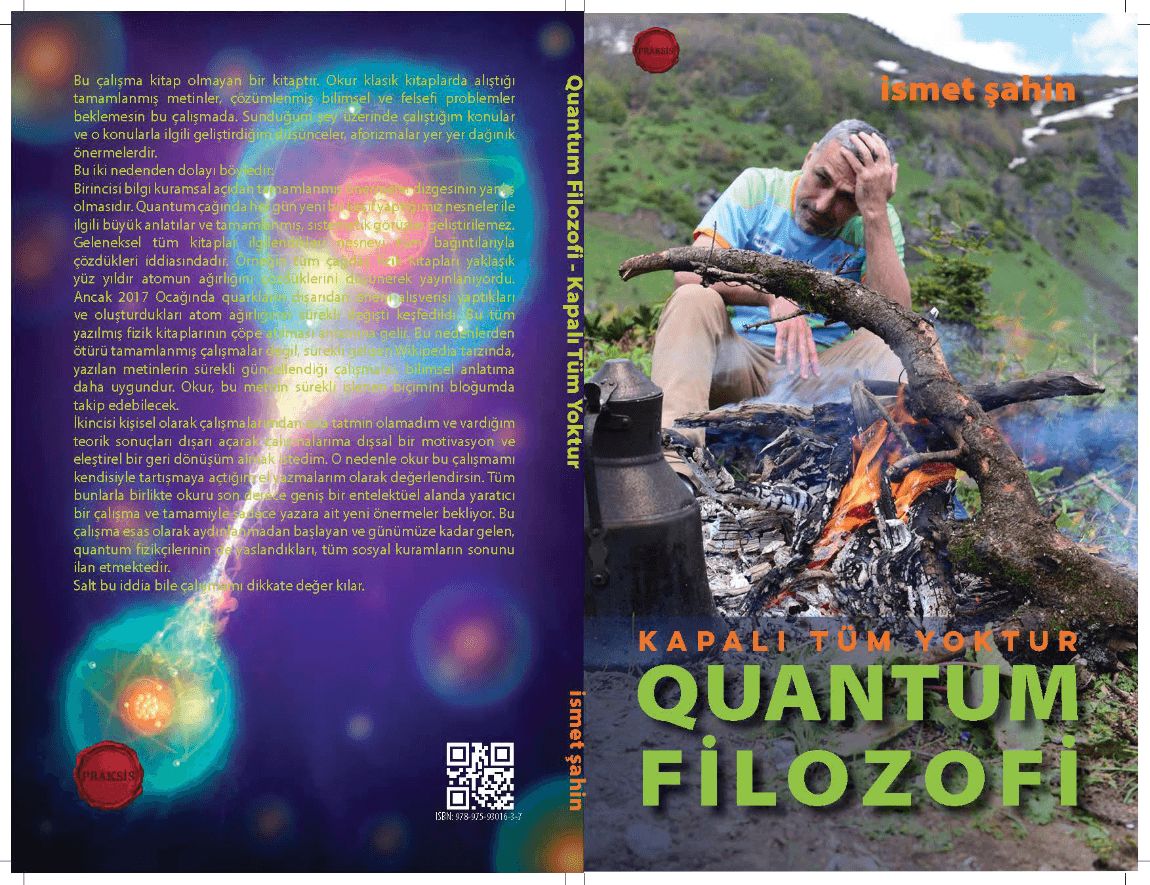



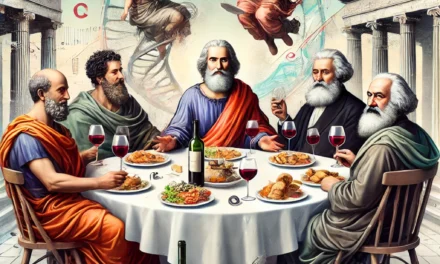


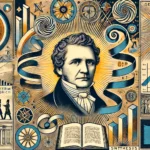



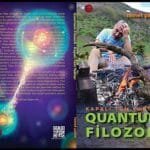







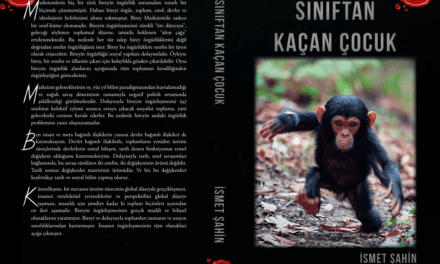





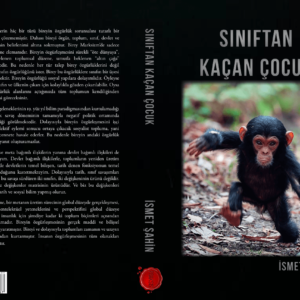
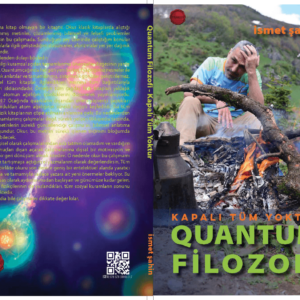
RECENT COMMENTS